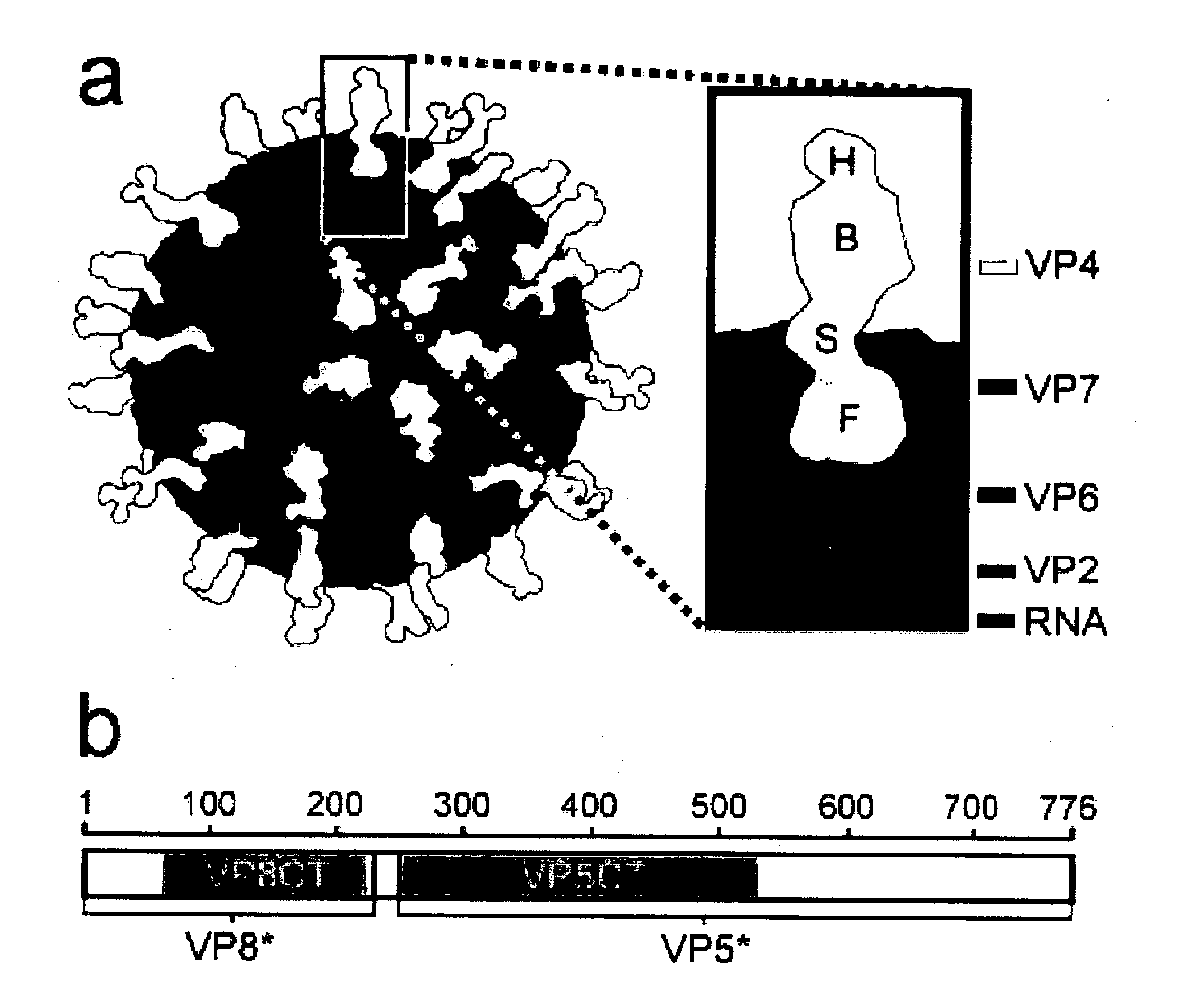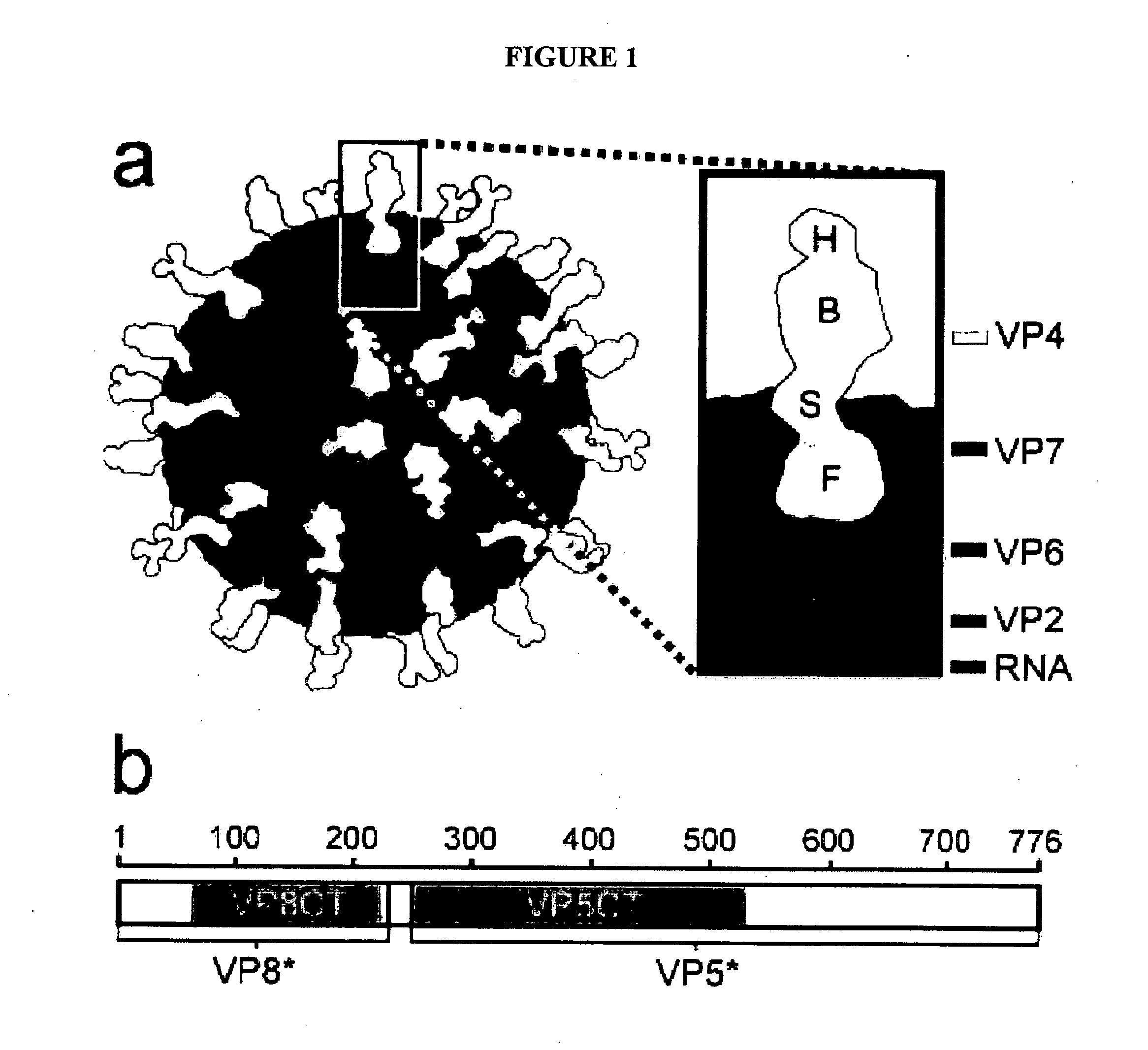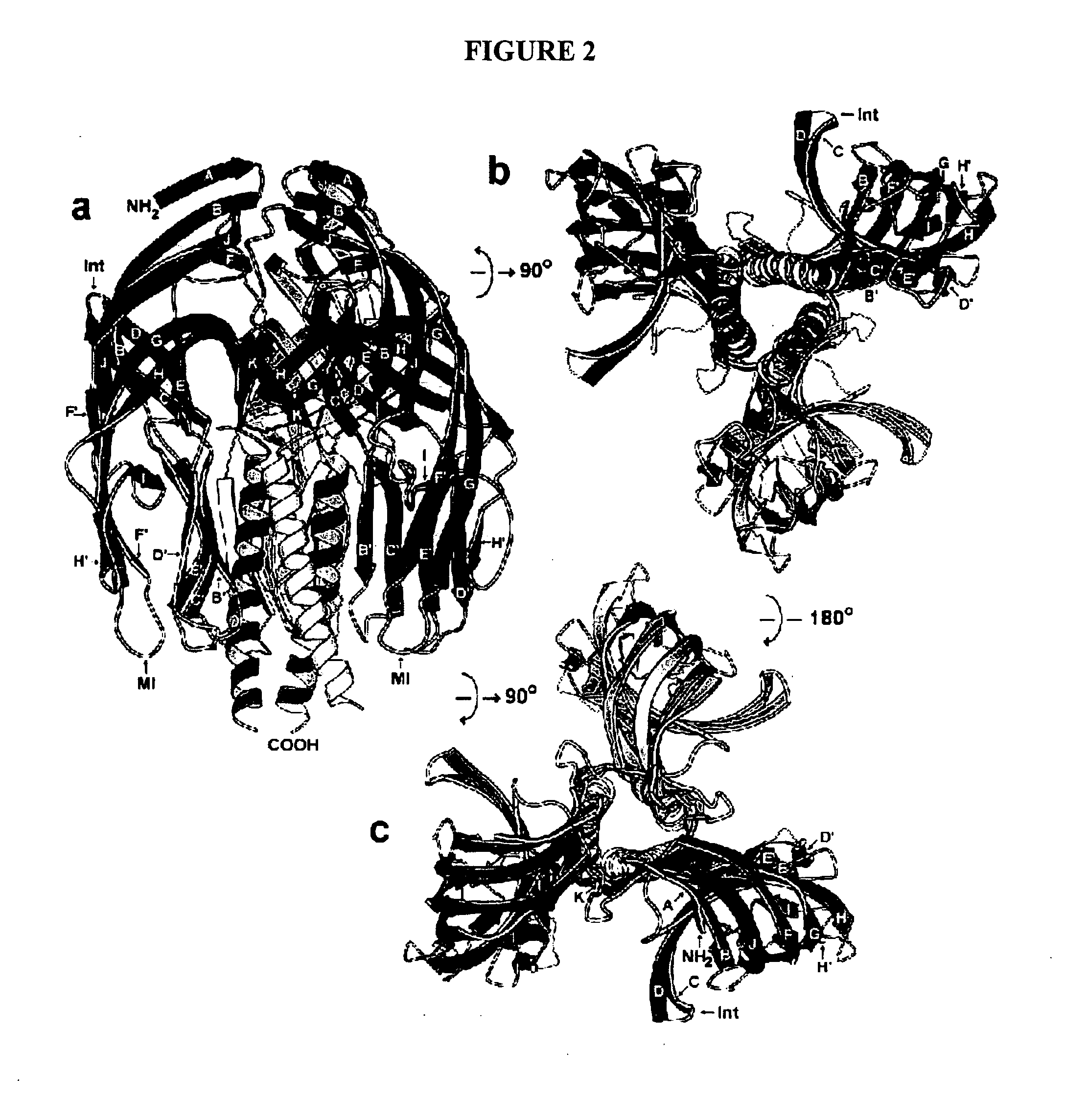Rotavirus antigens
a technology of rotavirus and antigens, applied in the field of rotavirus antigens, can solve the problems that the production of such a vaccine has not been easy, and achieve the effect of improving efficacy and safety
- Summary
- Abstract
- Description
- Claims
- Application Information
AI Technical Summary
Benefits of technology
Problems solved by technology
Method used
Image
Examples
example 1
Domain Structure of VP4, as Determined by Protease Analysis
[0181] Efficient infectivity of rotavirus in cell culture requires trypsin cleavage of VP4 into two fragments, VP5* and VP8*, both of which remain associated with the virion. Activation of rotavirus for membrane interaction and infectivity has been mapped to a specific cleavage after residue R247 of VP4. The VP8* trypsin cleavage product contains the viral hemagglutinin; the VP5* fragment contains an internal hydrophobic region that has been linked to the ability of activated rotavirus virions to permeabilize membranes. VP5* has also been implicated in the binding of sialic acid-independent strains of rotavirus to cells. Both VP8* and VP5* contain the targets of neutralizing antibodies against rotavirus.
[0182] Image reconstructions from electron cryomicroscopy of trypsinized rotavirus particles demonstrate that VP4 forms protruding spikes with apparent 2-fold symmetry and lobed heads. An additional portion of VP4 is buried...
example 2
Direct Expression of VP8CT in Bacteria Yielding an Efficiently Produced, Soluble Protein
[0192] The majority of neutralizing monoclonal antibodies (mAbs) that recognize VP4 of hemagglutinating rotavirus strains select mutations in VP8*. Several of these mAbs block cell attachment. In contrast, the majority of neutralizing mAbs that recognize VP4 of sialic acid independent human rotavirus strains select mutations in the VP5* fragment. As VP8*-specific neutralizing antibodies show limited cross-neutralization among rotavirus strains, VP8* is the main determinant of rotavirus “P” serotype. VP8* may also have intracellular functions in virus replication, as it has been shown to activate cell signaling pathways upon binding to TRAFs (tumor necrosis factor receptor associated factors).
[0193] Constructs. To construct plasmid pGex-VP846-231, the nucleotide sequence encoding residues A46 to R231 of RRV VP4 was amplified by PCR from plasmid pRRV-4, which contains a previously described clone...
example 3
Structures of RRV VP8* Core as Determined by NMR Spectroscopy and X-ray Crystallography and Initial Optimization of the VP8* Core Antigen
[0197] Structure Description. NMR and X-ray analyses revealed the same basic protein structure. The rotavirus VP8* core is a single, compactly folded, globular domain with dimensions of 36.6 Å by 37.7 Å by 28.3 Å, as measured on a Cα trace. Although there is a two-fold rotational symmetry axis in space group P41212, the two-fold crystal contact (centered around residues A89, E109, P110, W138, and K163) does not suggest a stable dimeric interaction. The NMR spectra contain no NOE cross peaks that would come from a dimer in solution. The VP8* core contains two cysteines (C203 and C216), but they do not form a disulfide bond in the folded structure. Prolines 68 and 182 are in the cis configuration. In addition, there is electron density for two alternate positions of the proline 157 carbonyl, indicating that the crystals contain a mixture of molecule...
PUM
| Property | Measurement | Unit |
|---|---|---|
| Fraction | aaaaa | aaaaa |
| Mass | aaaaa | aaaaa |
| Strain point | aaaaa | aaaaa |
Abstract
Description
Claims
Application Information
 Login to View More
Login to View More - R&D
- Intellectual Property
- Life Sciences
- Materials
- Tech Scout
- Unparalleled Data Quality
- Higher Quality Content
- 60% Fewer Hallucinations
Browse by: Latest US Patents, China's latest patents, Technical Efficacy Thesaurus, Application Domain, Technology Topic, Popular Technical Reports.
© 2025 PatSnap. All rights reserved.Legal|Privacy policy|Modern Slavery Act Transparency Statement|Sitemap|About US| Contact US: help@patsnap.com



